Despite living here on the Dorset coast all my life, when we pick a place to do this POTA nonsense and head out, I still get a bit of a rush when I think that all this beauty is just there, a few minutes down the road, for everyone to enjoy.
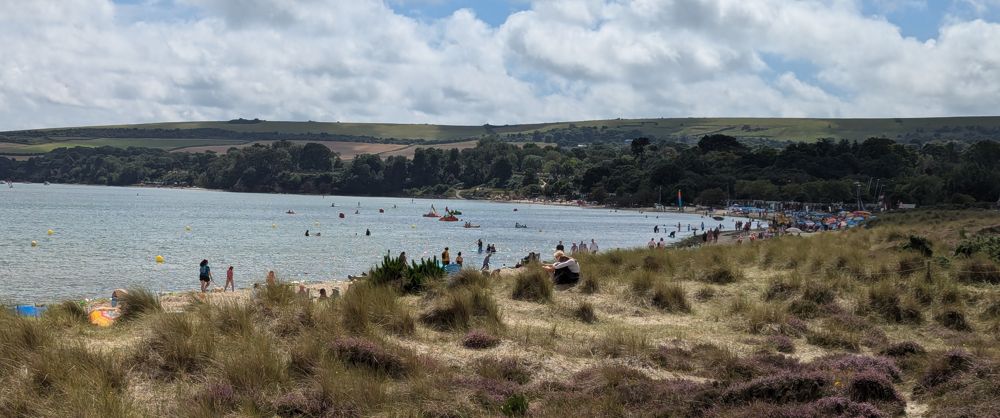 View of Studland and Knoll Beach from the North
View of Studland and Knoll Beach from the North
I guess that’s what this is all about, isn’t it?
Today’s Park to put “On The Air”: Studland Heath, known to the POTA crowd as GB-0047 Dorset Heathlands - Studland & Godlingston Heath National Nature Reserve. It also qualifies, as so much does around these parts, for GB-0008 Dorset National Landscape. Unfortunately the South West Coast Path (GB-1265) follows the beach here, whereas we chose to set up further inland on the heath where there were fewer people about, so we can’t get triple credit for this one.
The drive out was an odd one. Despite being a sunny day in the school holidays we were about fifth in line for the ferry with no queue back down the road at all. Even the car park was easy to find space in, although the beach was just as packed as you would expect. Knoll Beach remains an extortionately expensive place to park and to have lunch (£3.30 can of fancy lemonade anyone?), but a necessary evil as we had not brought packed lunches this time. The pasty was pretty decent!
(The café has a now common phrasing on a sign by the door: “Assistance dogs welcome, but please leave your furry friends outside.” Signwriters, I beg you, spend some time on the internet before you write things like that.)
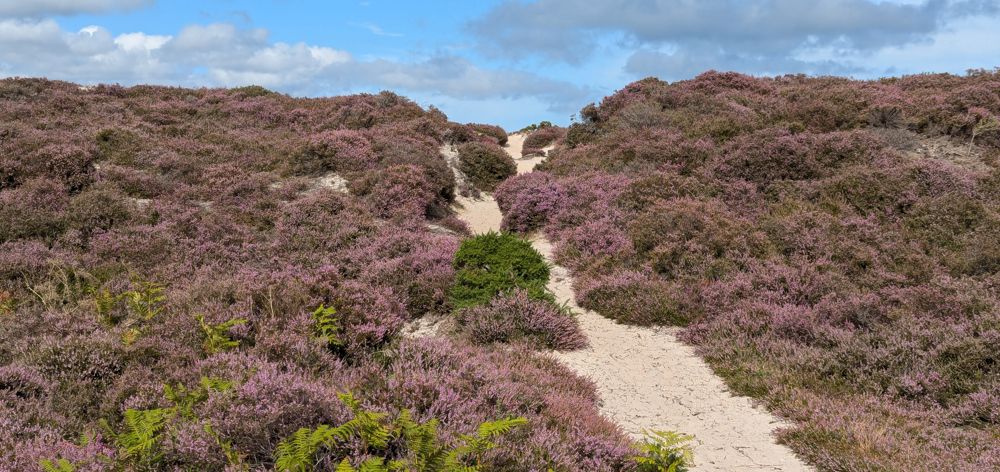 Off up onto the heath we go
Off up onto the heath we go
I chose, as usual, to wander off onto less-used trails until we could find ourself a quiet spot. This has worked well so far; we have had some interested looks from passers-by on this and other activations, but never anyone coming to ask us what we’re doing, or (worst of all) if we are allowed to be doing it. This is POTA activation number four, and I still dread it happening one day.
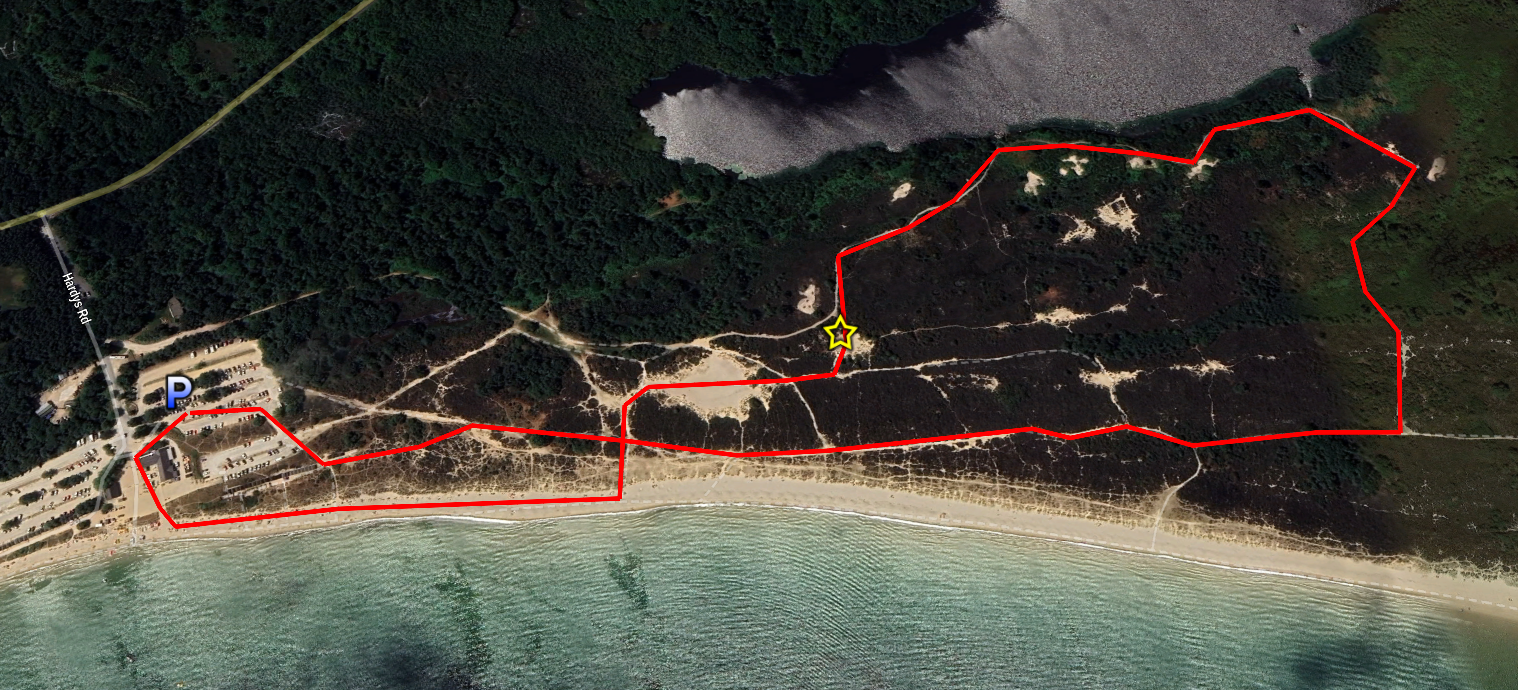 Walking route to and from the activation spot
Walking route to and from the activation spot
We found a sandy hollow in between banks of heather that looked a perfect size for our 20/40m inverted-V dipole antenna, and set up our station and our picnic blanket for the next couple of hours.
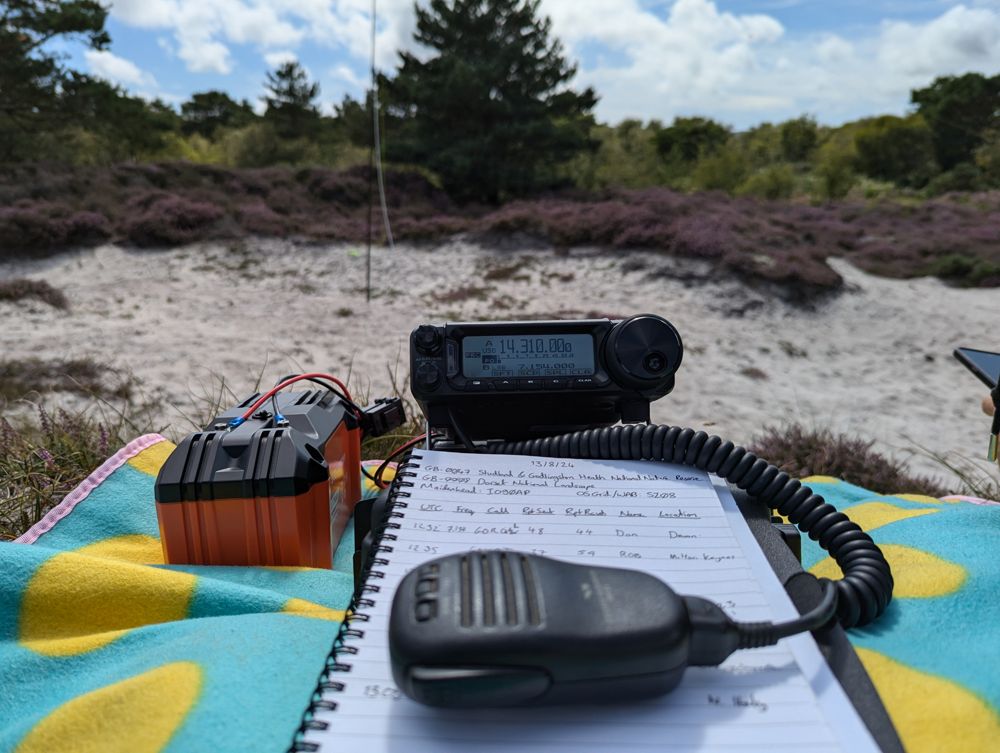 Our portable station equipment: Yaesu FT-891, Ecoworthy 20Ah LiFePO4 battery, Sotabeams Band Hopper II antenna and Tactical Mini mast, paper log.
Our portable station equipment: Yaesu FT-891, Ecoworthy 20Ah LiFePO4 battery, Sotabeams Band Hopper II antenna and Tactical Mini mast, paper log.
As usual, the 40m band was productive for a while, despite the weekend’s geomagnetic storms still not having fully abated. Also as usual: after calls started to drop off, we switched to 20m and then spent the next half hour wondering why 20m was so bad for us.
While our calls were going unanswered, I started fiddling with the radio settings. First, I checked the SWR of the antenna, thinking that because 40m was usually fine but 20m was not, it was perhaps an issue there. The Band Hopper II is a pretty simple wire antenna with croc clips halfway down each beam, which you separate for 20m and connect for 40m. I prefer not to need a tuner for portable operating, and would rather just have simple wire dipoles like these for the bands of interest. But the SWR was fine, so what next?
Here comes a lesson in learning to use your rig properly.
We had the same issue with the 20m band on previous activations, and up on Win Green I decided to increase our transmit power from 25W to 100W in order to improve the situation. Or at least, that’s what I thought I did. Now the FT-891 is still fairly new to me, and I am definitely not a master of its many different menu options… It turns out that the setting I ramped up to 100 was “SSB OUT LEVEL”, and while the range is 0-100, it’s not the transmitted power. (“SSB OUT LEVEL” is the volume on the audio out pin of the DATA/RTTY connector, when receiving SSB.) Today, scrolling down further, I discovered “HF SSB TX POWER”. Set to 10.
So all our POTA activations so far had been “accidental QRP” at 10 Watts.
With hindsight, a couple of 57 reports from Germany and the south of France seem pretty good!
I ramped it up to 100W, made a few more CQ calls, and suddenly we were getting replies again! So much so that we now had more of a challenge on the receive side—we were getting replies from stations we could barely make out, even above that lovely POTA S0-1 background noise level.
On 40m at 10W, with our inverted V dipole close to the ground, my guess would be that we were only getting NVIS contacts, with 10W being enough for one reflection off the ionosphere and back, and most stations replying to us coming in strongly with their more powerful transmitters. These have almost always been UK or French stations, backing up this theory. On 20m however, our 10W just wasn’t enough to get out over the “skip zone” to stations further away. At 100W, we had no problem getting our signal out over the first skip, and were rapidly in contact with stations from Austria, Italy, Norway and Finland.
It was great to finally get some contacts with people further afield at last, particularly park-to-park contacts in Austria and Norway, and closer to home with 2E0HPI, a previous activator of Studland Heath.
We ended up with 14 contacts over a couple of hours, three done entirely by my daughter under supervision, who is becoming much less mic-shy than on previous trips!

After packing up the station, we hiked round the heath for a bit, stopping by the Little Sea. This is a freshwater lake, home to Dartford warblers and now beavers, and is pretty big compared to the size of the rest of the heath! But without making its presence obvious, either from the beach or the road, it gets overlooked by the majority of tourists here. We didn’t see any of the more exciting wildlife, but it’s a nice place to visit nonetheless.
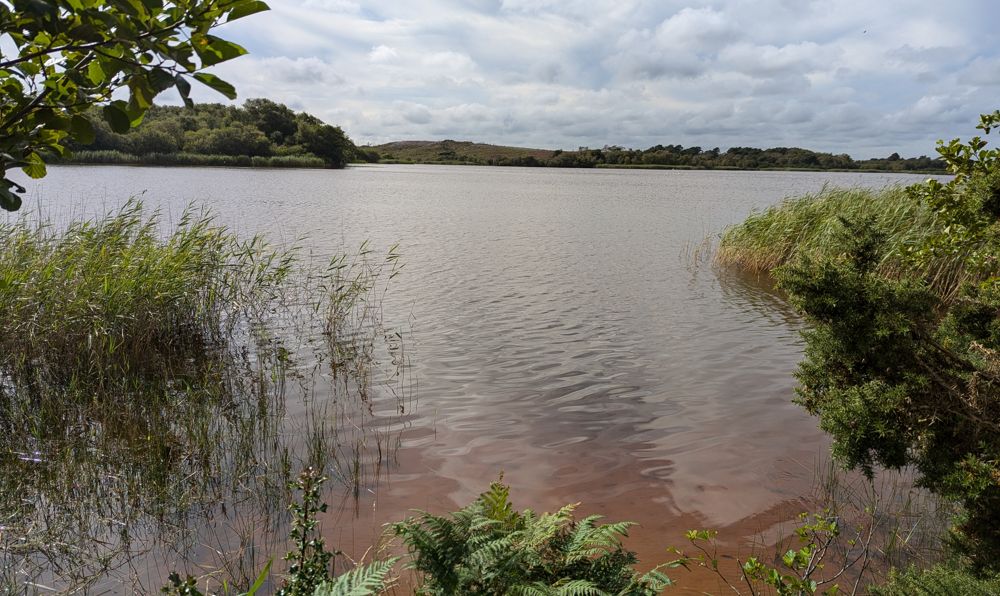 View westward over the Little Sea towards the Purbecks
View westward over the Little Sea towards the Purbecks
Thanks to all our contacts today:
| UTC | Freq | Call | RST Sent | RST Rcvd | Name | QTH | On Mic | Note |
|---|---|---|---|---|---|---|---|---|
| 1232 | 7.134 | G0RQL | 48 | 44 | Don | Devon | Ian | |
| 1235 | 7.134 | G0HRT | 37 | 59 | Robert | Milton Keynes | Ian | |
| 1238 | 7.134 | F5PYI | 36 | 52 | Larry | France | Ian | |
| 1239 | 7.134 | 2E0HPI/P | 45 | 57 | Carl | GB-0023, GB-0711 | Ian | P2P |
| 1251 | 7.135 | M0JKD | 49 | 56 | Tim | 10mi N. of Banbury | Ian | |
| 1254 | 7.135 | M6EAM | 47 | 56 | John | Christchurch | Ian | |
| 1309 | 14.275 | IU1HJF | 55 | 53 | Rubens | N. Italy | H | |
| 1345 | 14.312 | OE4JHW | 49 | 59 | Juergen | AT-0135 | Ian | P2P |
| 1348 | 14.312 | OE8HAM | 23 | 59 | Alex | Austria | Ian | |
| 1402 | 14.318 | LA9PJA/P | 59 | 59 | Carlos | NO-0255 | Ian | P2P |
| 1410 | 14.327 | IK1TTD | 22 | 15 | Gianpaolo | Italy | H | |
| 1412 | 14.327 | OH1NOA | 33 | 59 | Timo | Finland | H | |
| 1416 | 14.327 | IK1TTD | 21 | 31 | Gianpaolo | Italy | Ian |
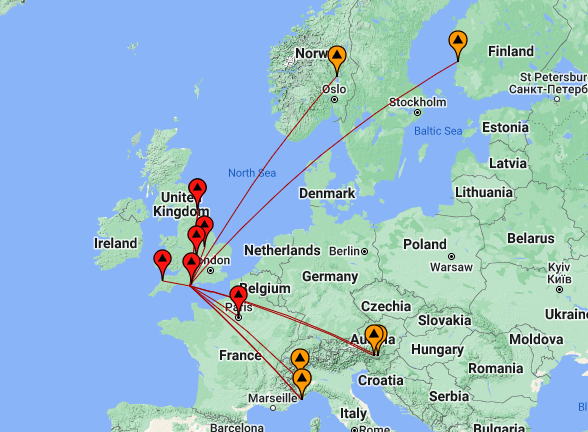 Map of contacts from the activation
Map of contacts from the activation
See you on the air next time!
Comments